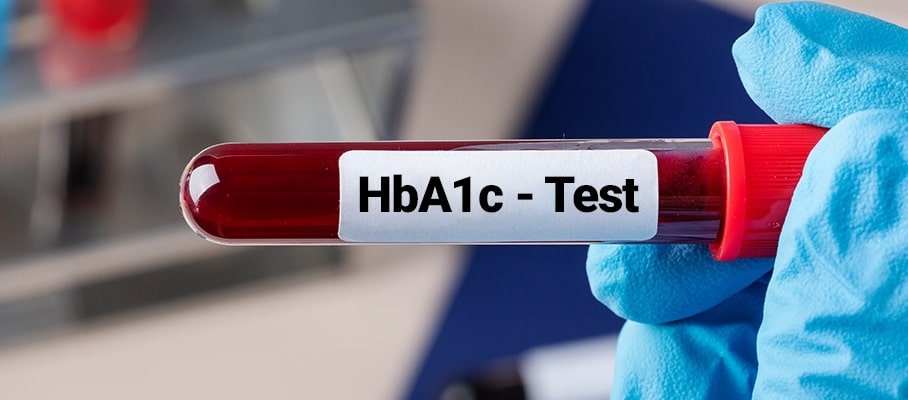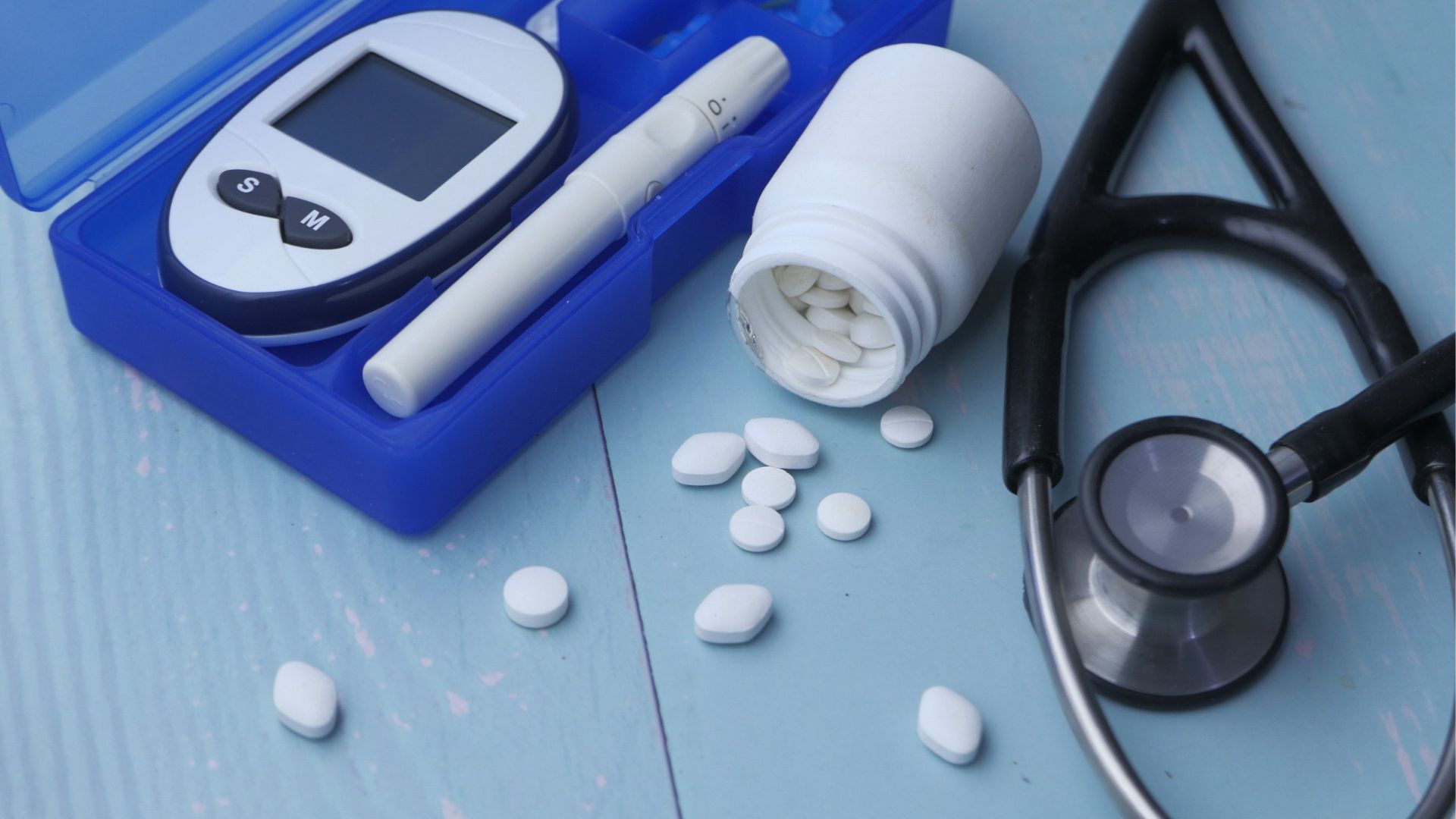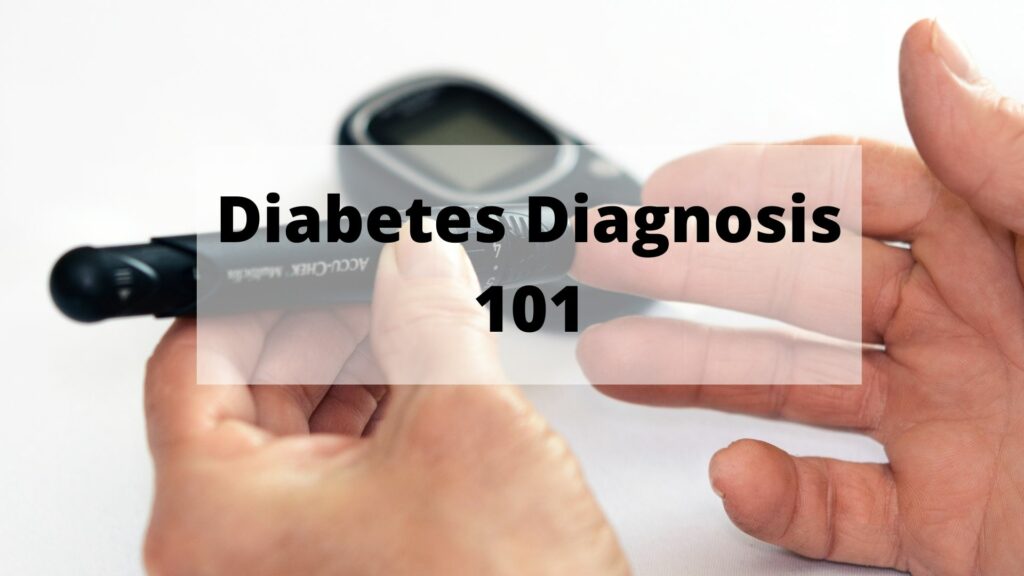Diabetes is a serious health condition that impacts millions of people all over the world. Managing diabetes requires careful attention to diet, insulin requirements, exercise habits, and many other factors. It can be difficult to diagnose diabetes in its early stages because there are no symptoms in association with diabetes until it has progressed significantly. If you think you might have diabetes or know someone who may need diabetes diagnosis services, read on for important information about this condition.
Contents
What is Diabetes?
Diabetes is a chronic condition that affects the way your body processes blood sugar. diabetes can be broken down into two main types: type one diabetes and type two diabetes.
Insulin is a hormone produced by your pancreas, an organ located behind your stomach. It enters your circulation via the action of your pancreas. Insulin is the “key” that opens the cell wall “door,” allowing glucose to enter your cells. Glucose is the “fuel” or energy source that tissues and organs require for optimal performance.
Type 1 Diabetes
In type one diabetes, the body’s immune system attacks and destroys cells in the pancreas that create insulin. Because of this attack, little to no insulin is produced or released into the bloodstream. In time, glucose builds up in a diabetic person’s blood because it has nowhere else to go since there isn’t any insulin being in use by cells for transport. The result can be devastating if not managed properly over an extended period which includes kidney failure and other serious complications.
Type 2 Diabetes
Type 2 diabetes is caused by a problem with insulin production or insulin receptor function. Your body either doesn’t make enough insulin or the cells in your body don’t react to it properly. This is the most common form of diabetes, accounting for up to 95% of cases. It tends to affect middle-aged and older persons. Adult-onset diabetes and insulin-resistant diabetes are two other names for Type 2. It was formerly known as “sugar on the side.”
Gestational Diabetes
Gestational diabetes can affect pregnant women. It starts when the pancreas is no longer able to make insulin or becomes less effective at using it. Insulin is a hormone that controls how your body uses glucose for energy. When you have gestational diabetes, your baby gets extra sugar from you through the placenta which may cause your blood sugar levels to rise too high after eating and throughout pregnancy. However, if you have gestational diabetes, you are more likely to get Type 2 diabetes in the future.
Prediabetes
As diabetes is on the rise, it’s important to be aware of what forms prediabetes may take. Prediabetes can often be in terms of high blood sugar levels that aren’t yet high enough for a diabetes diagnosis but indicate diabetes risk. Symptoms such as frequent urination and thirstiness are also common with both diabetes and pre-diabetes; however, these symptoms typically occur later in the progression of diabetes than they do with pre-diabetics.
Not only does this mean you will likely notice signs like dry mouth or dehydration before other health problems arise (such as blindness or nerve damage), diagnosing your condition early means you have more time to slow its progress—and possibly avoid it entirely if diet changes alone prove sufficient.
Some Uncommon types of Diabetes
Additionally, there are a variety of types of diabetes that are uncommon or rare. They include:
Monogenic diabetes syndromes are extremely uncommon genetic types of diabetes that account for about 4% of all cases. Neonatal diabetes and maturity-onset diabetes of the young are two examples.
Cystic fibrosis-related diabetes: This is a kind of diabetes that affects those who have cystic fibrosis.
Diabetes caused by medicines or chemicals: Following organ transplant, receiving HIV/AIDS therapy, or suffering from glucocorticoid steroid use are examples of this sort.
Diabetes insipidus is a rare, unusual illness that affects your kidneys and causes them to generate a lot of urine.
Diagnosis of Diabetes
Type 1 diabetes has no symptoms in the early stages. It is frequently the reason for blood sugar testing. The American Diabetes Association (ADA) has suggested screening regulations since symptoms of other sorts of diabetes and prediabetes develop more gradually or are not always visible. According to the ADA, the following people should be in check for diabetes and put in diagnosis:
Anyone who has one or more of the following risk factors, regardless of their age, with a body mass index (BMI) higher than 25: high blood pressure, abnormal cholesterol levels, a sedentary lifestyle, polycystic ovary syndrome, or heart disease in a close relative.
Better blood sugar control is essential for people with diabetes because staying healthy depends on it. Adults aging 45 and above should have to have their blood sugars tested initially and then every three years after that if the results are normal.
Women who have had gestational diabetes should be on the test for diabetes every three years.
Every year, those who have been diagnosed with prediabetes are urged to get retested.
Tests for Type 1 and Type 2 Diabetes and Prediabetes
The A1c Test

The A1C test measures the percentage of red blood cells that are glycosylated. The average blood sugar level for the previous two to three months is shown by this blood test, which does not require fasting. The proportion of sugar bound to hemoglobin, the oxygen-carrying protein in red blood cells, is measured.
The more hemoglobin you have with sugar attached, the higher your blood sugar levels are. A diabetes diagnosis is confirmed when two separate checks reveal an A1C level of 6.5%. Prediabetes is diagnosed when an A1C is between 5.7 and 6.4 percent on two readings. Normal ranges begin at 5.7%.
If the A1C test results are unreliable, you can’t take it, or you have certain circumstances that can cause the A1C test to be incorrect — such as if you’re pregnant or have a rare form of hemoglobin (called a hemoglobin variant) — your doctor might perform one or more of the following procedures to diagnose diabetes:
Random Blood Sugar Test
A random blood sugar test will be done. A blood sample will be drawn at a random moment. According to when you last ate, a blood sugar level of 200 mg/dL or higher (11.1 mmol/L) indicates diabetes.
A blood sugar level of less than 100 mg/dL (5.6 mmol/L) is in consideration as normal after an overnight fast. Normal fasting blood sugars are between 80 and 125 mg/dL (3.4 and 6.9 mmol/L). If your fasting blood sugar levels are between 100 and 125 mg/dL (5.6 and 6.9 mmol/L), you have prediabetes. Diabetes develops if your blood sugar levels reach 126 mg/dL (7 mmol/L) or higher on two separate occasions.).
Glucose Tolerance Test
A glucose tolerance test (GTT). The fasting blood sugar level is in measurement for this test. Then you drink a sweet beverage and have your blood sugars monitored every 20 minutes for the next two hours.
A blood sugar level of less than 140 mg/dL (7.8 mmol/L) is considered normal. When the BG levels exceed 200 mg/dL (11.1 mmol/L) after two hours, diabetes has been diagnosed. Prediabetes is an indication by reading between 140 and 199 mg/dL (7.8 mmol/L and 11.0 mmol/, respectively).
If you have type 1 diabetes, your urine will be examined for the presence of a byproduct produced when muscle and fat tissue are used for energy because the body doesn’t have enough insulin to utilize available glucose (ketones). Your doctor will also most likely test you for autoantibodies, which are immune system cells that destroyed insulin-producing beta cells in people with type 1 diabetes.
these tests are the most accurate for the diagnosis of diabetes.
Tests for Gestational Diabetes
Your doctor will likely screen for your gestational diabetes risk factors throughout your pregnancy:
- If you’re at risk of developing gestational diabetes — for example, if you were overweight at the beginning of your pregnancy; you had gestational diabetes during a previous pregnancy; or you have a mother, father, sibling, or child who has diabetes — your doctor may conduct a glucose screening during your first prenatal visit.
- If you’re at average risk for gestational diabetes. You’ll probably be in screening for it during your second trimester — usually between 24 and 28 weeks of pregnancy.
Diabetes Diagnosis for Pregnancy

To assist you to decide whether or not treatment is necessary, your doctor may perform the following screening tests:
- The glucose challenge test is a diagnostic procedure in which you drink a thick, syrupy solution. One hour after drinking the glucose solution, you’ll have a blood test to determine your blood sugar level. On a glucose challenge test, a blood sugar level of less than 140 mg/dL (7.8 mmol/L) is usually in regard as normal. Although this may vary at certain testing centres or labs.
- A high reading on a glucose monitor is merely indicating that you have a higher chance of getting gestational diabetes. To determine if you have gestational diabetes, your doctor will request a follow-up test.
- Glucose tolerance testing is a test that measures your blood sugar levels over time. For the follow-up test, you’ll be asked to fast overnight and then have your fasting blood sugar level in measure. Then you’ll drink another sweet solution — this one containing a greater amount of glucose — and your blood sugar level will be in check every hour for three hours.
If two or more blood sugar readings are greater than the initial normal values for each of the three hours of testing, you’ll be in diagnosis with gestational diabetes.
Treatment
After the diagnosis of diabetes, depending on the type of diabetes you have, blood sugar monitoring, insulin injections, and oral drugs may all be necessary. Maintaining a healthy weight and getting moderate exercise are also critical elements in treating diabetes.
Treatments for All Types of Diabetes
Maintaining a healthy weight through a nutritious diet and exercise program is an essential component of managing diabetes, as well as your general health:
Diet
- Eating right. There isn’t, in fact, a single diabetes diet. You’ll need to concentrate your meals on more fruits, vegetables, lean proteins, and whole grains — which are high in nutrients and fibre while being low in fat and calories — while reducing saturated fats, refined carbohydrates, sweets. In actuality, it’s the ideal diet for the entire family. Sugary foods are acceptable once in a while as long as they’re in your meal plan.
- However, determining what and how much to eat may be difficult. A dietitian can assist you in developing a meal plan that meets your health goals, food likes, and lifestyle needs. Carbohydrate counting is likely to be involved. Especially if you have type 1 diabetes or use insulin as part of your treatment.
Exercise
- Physical activity is essential for everyone. Everyone requires regular aerobic exercise, and people who have diabetes are no exception. Aerobic exercise causes blood sugar levels to fall by transporting glucose into your cells, which is in use for energy. Aerobic exercise also improves insulin sensitivity, so you require less insulin to transport sugar to your cells.
- To preserve your health, you should always get your doctor’s permission before doing anything. Then pick activities that you like, such as walking, swimming, or cycling. The most essential thing is to incorporate physical activity into your daily routine.
- Aerobic exercise, such as walking or jogging is a recommendation. Aim for at least 30 minutes of aerobic activity most days of the week, or 150 minutes of moderate physical activity a week. Bouts of exercise can be as short as 10 minutes three times a day. If you haven’t exercised in a while, start slowly and build up gradually. Avoid sitting for too long; if you’ve been sitting for more than 30 minutes, get up and move about.
Treatments for Type 1 and Type 2 Diabetes

Treatment for type 1 diabetes includes insulin injections or the use of an insulin pump, frequent blood sugar checks, and carbohydrate counting. Lifestyle changes, monitoring of your blood sugar levels, and diabetes drugs, such as insulin or both, are in use in the treatment of type 2 diabetes.
Check Your Blood Sugar Level
Check your blood sugar regularly. You can check and record your blood sugar as many times a day or more often if you’re taking insulin, depending on your treatment plan. The only way to guarantee that your blood sugar levels stay in the range is to regularly check them. Those who don’t take insulin regularly check their blood sugar considerably less frequently than those who do.
Insulin Therapy
To live, people with type 1 diabetes require insulin therapy. Many individuals with type 2 diabetes or gestational diabetes use insulin as well. Insulin comes in a variety of forms, including short-acting (regular) insulin, rapid-acting insulin, long-acting (basal) insulin, and intermediate options. Your doctor could prescribe a combination of types of insulin to use throughout the day and night based on your demands.
Oral Injections and Medicines
Other treatments, such as injections. In some cases, other oral or injected medicines are in use. Some diabetes drugs boost the production and release of insulin by your pancreas. Others limit glucose production and release in your liver, requiring less insulin to move sugar into your cells.
Pancreatic Surgery
Pancreas transplantation is a surgery in which a person’s damaged pancreas is removed and replaced with healthy donor tissue from another individual. In some people who have type 1 diabetes, a pancreas transplant may be an option. Islet transplants are in the investigation as well. You would no longer require insulin treatment after a successful pancreas transplant. However, transplants aren’t always successful, and these operations have significant risks.
Bariatric Surgery
Bariatric surgery is a form of weight loss surgery that reduces the stomach size by reducing appetite, rebalancing hormones, and altering portion sizes. Although it isn’t specifically in consideration as a treatment for type 2 diabetes. Persons who have the condition and are overweight with a body mass index greater than 35 might benefit from this kind of surgery. People who’ve had gastric bypass experienced significant reductions in their blood sugar levels. However, the long-term risks and benefits of this operation for type 2 diabetes aren’t yet understandable.
Treatment for Gestational Diabetes
Controlling your blood sugar level is critical for the health of your baby and preventing birth-related problems. In addition to eating correctly and exercising. You may be given a treatment plan that includes monitoring your blood sugar levels and, in some circumstances, insulin or oral medications. During labour, your doctor will keep an eye on your blood sugar level as well. If yours rises considerably, your infant might give off excessive levels of insulin — which can result in low blood sugar after delivery.
Treatment for Prediabetes
If you have prediabetes, making healthy lifestyle choices can help you get your blood sugar under control or at least keep it from rising to the levels seen in type 2 diabetes. Maintaining a healthy weight and engaging in physical activity may assist. Losing about 7% of your body weight through exercise and exercising at least 150 minutes each week might help prevent or delay type 2 diabetes.
If you have type 2 diabetes and require a blood glucose monitor, they will be more precise than home monitoring. However, if your doctor determines that you may benefit from continuous self-monitoring, it is best to acquire an around-the-clock pump or two with a smartphone app rather than purchasing a meter. For example, metformin (Glucophage, Glumetza) is often in use as non-insulin hormone therapy for people with prediabetes who are at high risk of developing diabetes.
Preparing for Your Appointment

Here’s some information to help you prepare for your appointment as well as what to anticipate before the diagnosis of diabetes –
- Be aware of any pre-appointment restrictions. When you make the appointment, Inquire if there are any prior requirements. This is likely to include a diet limitation, such as a blood sugar test done during fasting.
- Make a list of all the symptoms you’re experiencing, including any that may appear to be unrelated.
- Make a list of important personal information, such as major pressures or recent life changes. Bring a log of your glucose test results, noting the dates and times of testing, if you’re recording your glucose levels at home.
- Make a list of any allergies you have, as well as all pharmaceuticals, vitamins, and supplements you’re taking.
- Make a record of your family’s medical history. Note any relatives who have had diabetes, heart attacks, or strokes, in particular.
- If you can, take someone from your family or close friend. Someone who walks with you may be able to assist you with recall.
- Make a list of questions to ask your doctor. Inquire about topics regarding your diabetes management that you’re unclear about.
- If you need more medication, be sure to ask. Your doctor may renew your prescriptions while you are in treatment.
Conclusion
With more and more people living with diabetes, it is important to learn the causes of diabetes. These include a diet that consists primarily of processed foods or sugary drinks, an inactive lifestyle, obesity, or genetics. If you are experiencing any symptoms such as frequent urination at night, extreme thirstiness throughout the day, and unexplained weight loss then you should consult your doctor for testing. It is also worth noting that there may be other conditions that cause similar symptoms so it’s best not to self-diagnose until consulting a medical professional.
Do you want to get rid of diabetes? Join our online diabetes consultation program and reverse your Diabetes naturally through lifestyle changes such as a Personalized Diet plan, Exercise, dieticians, and health coaches.


